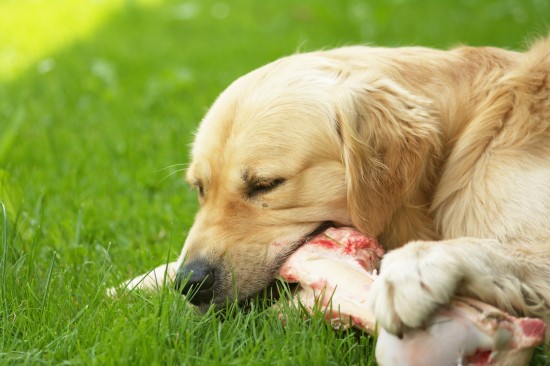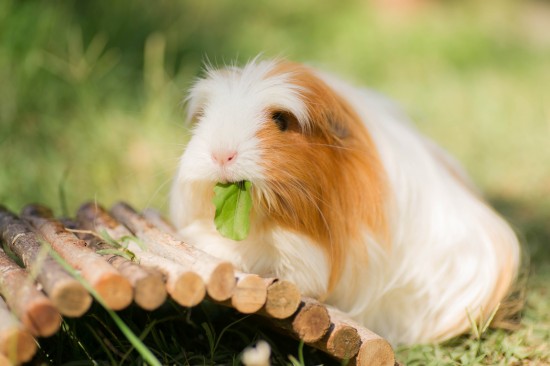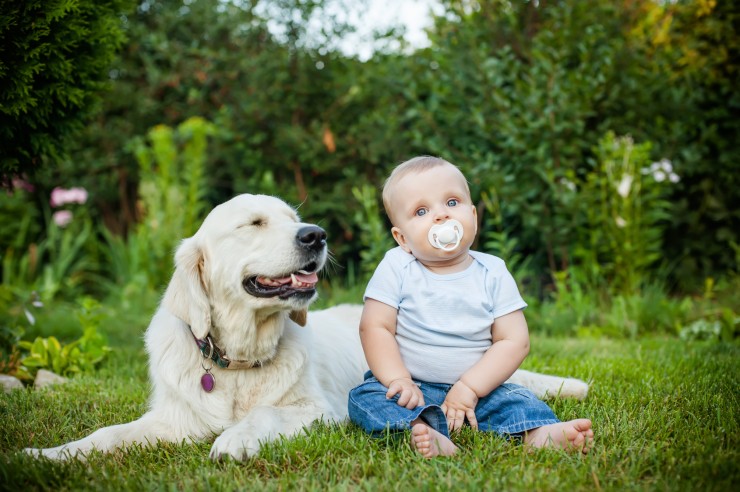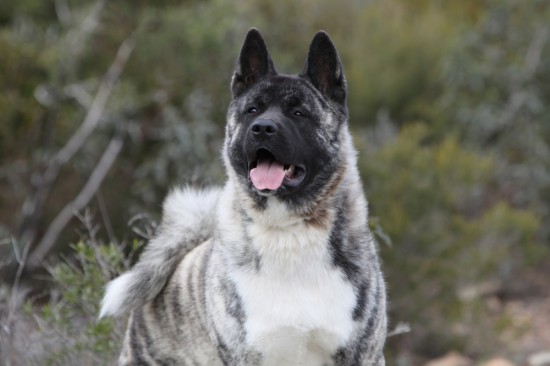

Raw feeding is popular because you know exactly what your dog is eating (so long as you have a reputable meat supplier). Advocates for raw report high palatability in most cases, and the lack of processing may prove beneficial for dogs who are known not to fare well with extruded commercial diets. There are however some risks associated with this method of feeding, but they need not prevent an owner from embarking on raw so long as one is aware of these potential problems and takes all possible steps to prevent a nutritional imbalance, bacterial or parasitic infection and injury/impaction from bone.
For DIY raw feeders in particular, a large freezer is essential. This is because advance planning and preparation is required to ensure the correct balance of nutrients over a set time period. Also, a variety of meats are needed to provide them, and better deals can also usually be secured for bulk buys. One big fear of the raw feeder is what happens in the event of a power failure or the freezer breaking down? Most raw feeders have a separate freezer for their dogs’ supplies for reasons of hygiene as well as to ensure they have space for their own frozen food. If your dogs’ freezer fails, providing the meat is properly contained (e.g. wrapped in grease proof paper within Ziplock bags or recycled plastic takeaway containers), it can share space in your own until a replacement is obtained or it’s fixed. For a short period of time (e.g. in a power cut), providing the freezer door is kept closed, the internal temperature should remain suitably cold so as to avoid rapid defrosting and the need to quickly transfer it. Invest in a freezer thermometer if there is not one in-built. Another sensible plan is to ask other raw feeding friends if they would be prepared to help store your food in a freezer emergency, and be sure to offer to return the favour. Some meats which have defrosted can be safely refrozen, but this does depend on the type, how much defrosting has occurred and whether it was initially freshly frozen. Holistic vet Chris Day recommends that no meat should be re-frozen. If in doubt, it best to feed it as soon as possible, and in the event of any excess, pass it on to a raw feeding friend or discard. Keep your dog’s freezer scrupulously clean and tidy, and be sure to date and rotate your supplies.
Devising a raw feeding plan is complex because entities that are normally known with commercial food (the nutrient balance, the calorie content and subsequent feeding portions) are not provided for you and require calculation based on your dog’s life stage and activity level as well as general canine nutrient requirements and any special factors relevant to the individual. It is best to start off with a good book by a qualified and credible author (such as Lew Olson’s “Raw & Natural Nutrition for Dogs”). There’s plenty of advice that can be gleaned online too, but do check the author’s credentials as a poorly planned and prepared raw diet can result in dietary deficiencies or excesses. Too much vitamin A (found in liver) for example can cause a condition called hypervitaminosis A which results in abnormal bone formation. If you are cautious about getting the right balance, then why not start off with one of the commercial pre-packed raw brands which are now very widely available?
Bones should never be cooked. Raw bones must be of a suitable size and density for the individual dog. Those which are overly hard can damage the teeth. Bones should always be fed supervised, and for a dog who is transitioning to raw feeding, it may be necessary to hold softer more pliable material such as chicken wings in a pair of pliers to prevent your dog from swallowing them whole. Bones can splinter, and they can cause impaction if large amounts are ingested. It’s therefore important to keep an extremely close eye on faecal output, and consult your vet in the event of constipation or any digestive discomfort. Raw bones are a very important source of minerals in a raw diet, but not all dogs fare well with them. In the event of any concerns, you could consider prepared pre-frozen pet minces which include ground bone, or you could even invest in an industrial mincer and create your own (although they are very expensive, even if second hand).
Make sure you wash your hands thoroughly before and after handling (some owners prefer to use disposable gloves), and ensure utensils and equipment are kept clean (using a mild bleach solution, sterilising tablets (as for baby bottles or beer/wine making) or antibacterial preparation that’s safe for dogs. Invest in chopping boards, knives, containers, scissors and anything else required for preparing raw meals to be kept exclusively for your raw food preparation. Many owners find that disposable cloths or those that can be wiped down with safe detergent are ideal to protect table tops and work surfaces when working with larger quantities of food. As mentioned, it’s important to ensure your meats are dated and rotated so that meat past its best is not served. Use your common sense when assessing quality and suitability. If something smells unpleasant and you wouldn’t eat it yourself, then don’t feed it to your dog.
Not all raw meals fit nicely into a bowl! For this reason, it’s important to choose an area which can be efficiently cleaned after a meal. Feeding outdoors is popular; so long as the weather is neither too hot nor to cold, as the area can easily be hosed down. Indoors, you may like to use old towels or plastic cloths to protect hard flooring. Keep a mop and bucket especially for cleaning up after your dog that’s used for no other purpose, because raw feeding does carry an increased risk of zoonotic diseases (i.e. those which can be passed to humans), and these include pathogenic strains of E.Coli and Salmonella which can make us very unwell (and our dogs too).
Some medical conditions are what is known as “nutritionally” responsive, and this may require deviation from what we would consider to be normal nutritional parameters. One such example is when a dog suffers from urate urolithiasis. This condition necessitates a low purine diet. Offal and game meat are purine-rich so are off the menu, and the only truly low purine protein source suitable for dogs is egg. This can prove quite limiting, and whilst chicken and white fish are generally considered acceptable it can be difficult to provide all of the nutrients necessary from a raw diet. It’s not impossible, but consulting an independent nutritionist is the best option under such circumstances. Conditions where restriction of more than one nutrient is indicated (such as hepatic disease whereby the diet should contain only limited fat and copper) can also be difficult to cater for; as can dogs with allergies to multiple animal proteins. Many owners assume that because raw food is grain-free it is often the solution to dietary allergies. It can be a God-send in some cases, but not in those where it’s not actually the grains that are responsible.
Whilst you may be a dab hand at preparing raw meals for your dogs, others may not share your enthusiasm. For this reason it’s important to have a plan prepared for the eventuality that you may not always be on hand to feed your dogs; e.g. if you are away on business / holiday or are unwell. The nearest option to DIY raw is commercial pre-packed raw, but this may still not be very popular with the faint-hearted. A good quality wet food with a high meat (or fish) content would be the next closest. Commercial dry food is very far removed from raw food because:
a) Dry food contains only about 8% moisture and is much more calorie dense thus requiring considerably smaller feed portions for a dog used to raw.
b) Dry food can never emulate raw feeding due to the heat processing (which alters the structure of the nutrients; particularly the protein) and the fact that even the low carb products will still contain a significantly higher proportion than a typical raw menu.
That’s not to say that a dog predominantly raw fed cannot eat commercial food if necessary. A gradual introduction is wise when a new product is fed for the first time, and it’s a good idea to get your dog used to a few different options and keep a few cans / pouches or small bags stored away so that there’s no need to panic if for whatever reason you are unable to raw feed for any period of time. (Contrary to the belief of many; commercial food and raw food can be safely mixed).
If there are friends and family who will happily raw feed your dog in your absence; give them full written details and keep the instructions taped to the dogs’ freezer.
Game meat is nutritious and delicious for dogs, but do be careful due to it being a high purine meat (as described previously, certain types such as duck and venison are unsuitable for dogs with urate crystals). Other considerations are that it needs to be closely inspected for shot prior to feeding, and it may harbour external parasites (if supplied to your fresh complete with the pelt or feathers) or intestinal worms or protozoal parasites.
Extra caution is required with certain raw diet components as they may harbour intestinal parasites. Some examples are:-
Pork – Pork is associated with Trichinella spiralis, Taenia solium (tapeworm) and Toxoplasma gondii. However, good production practices, including a high level of sanitation and efficient rodent control regimes on farms mean that opportunities for the exposure of pigs to these parasites are now much more limited than previously. Dr Karen Becker recommends freezing pork for three weeks to ensure any oocysts are killed.
Rabbit - Tapeworms from rabbits can infect dogs, and the eggs are often present in the rabbit carcass even after careful removal of the intestines. It is not advised to feed rabbit guts, and for dogs fed on raw rabbit, regular worming for tapeworm is advised.
Fish – Fish may carry nematodes, but freezing them for a minimum of 4 days in a domestic freezer will kill them. Some raw feeders do however prefer to use cooked or canned fish. Holistic veterinary surgeon Chris Day recommends cooking white fish.
 What To Feed Your Guinea Pig
What To Feed Your
What To Feed Your Guinea Pig
What To Feed Your
 Are Dogs Really Smarter Than Cats?
Are Dogs Really S
Are Dogs Really Smarter Than Cats?
Are Dogs Really S
 Babies And Dog Allergies
Babies And Dog Al
Babies And Dog Allergies
Babies And Dog Al
 Gastric Dilatation-volvulus (gdv) Syndrome In Dogs
Gastric Dilatatio
Gastric Dilatation-volvulus (gdv) Syndrome In Dogs
Gastric Dilatatio
 Tick Diseases In Your Pet – How To Spot Them
With the first day of summer just over a month away, in some
Tick Diseases In Your Pet – How To Spot Them
With the first day of summer just over a month away, in some
Copyright © 2005-2016 Pet Information All Rights Reserved
Contact us: www162date@outlook.com